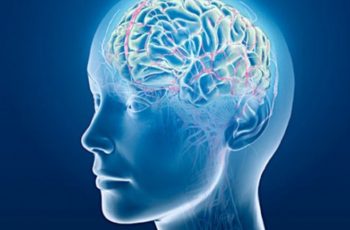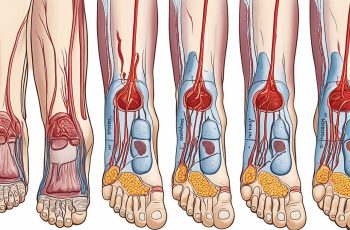Vertigo can be a debilitating condition that affects your balance and daily activities. If you’re struggling with vertigo, you’re not alone. Many people experience this spinning sensation, accompanied by dizziness, nausea, and balance issues. The good news is that there are several effective strategies to help alleviate vertigo symptoms and improve your quality of life.
In this article, I will guide you through natural remedies, exercises, and treatment options that can provide relief for vertigo sufferers. By incorporating these strategies into your routine, you can effectively manage your vertigo symptoms and regain control over your daily life.
How to Get Rid of Vertigo
- Vertigo is a condition characterized by a spinning sensation and dizziness.
- Common causes of vertigo include benign paroxysmal positional vertigo (BPPV) and inner ear issues.
- Natural remedies such as ginger, essential oils, and dietary adjustments can help alleviate vertigo symptoms.
- Exercises that focus on balance and stability, such as the Epley maneuver and Tai Chi, may provide relief.
- If symptoms persist or worsen, seeking medical help is important to determine the underlying cause and explore additional treatment options.
Understanding Vertigo and its Causes
Vertigo is a common condition that manifests as a spinning sensation and dizziness, often accompanied by nausea and balance issues. It can significantly impact a person’s quality of life and daily activities.
Vertigo can have various causes, including positional vertigo, inner ear vertigo, and other underlying conditions. One of the most common causes of vertigo is benign paroxysmal positional vertigo (BPPV). This occurs when calcium crystals in the inner ear become dislodged and disrupt the balance signals sent to the brain.
Other causes of vertigo include Meniere’s disease, a condition characterized by fluid buildup in the inner ear, and vestibular neuritis, which is inflammation of the vestibular nerve.

Understanding the underlying causes of vertigo is crucial in determining the most effective treatment approach. By identifying the specific cause, healthcare professionals can tailor treatment plans to address the root of the problem and provide targeted symptom relief.
Natural Remedies for Vertigo Relief
Vertigo can be a debilitating condition, but there are natural remedies that can provide relief from its symptoms. These remedies offer a holistic approach to managing vertigo and can be used in conjunction with other treatment options. Here are some effective natural remedies:
- Home Remedies: Some simple lifestyle changes can help alleviate vertigo symptoms. These include avoiding sudden head movements, staying hydrated, and getting plenty of rest.
- Dietary Changes: Certain foods and beverages can trigger vertigo episodes. It’s important to identify and avoid these triggers. Additionally, incorporating foods rich in potassium, magnesium, and vitamins B6 and D can help support a healthy vestibular system.
- Ginger: Ginger has long been used as a natural remedy for nausea, a common symptom of vertigo. Consuming ginger in various forms, such as ginger tea or ginger candies, may help reduce vertigo-related nausea.
- Acupressure: Applying pressure to specific points on the body, such as the wrist or the base of the skull, can help alleviate vertigo symptoms. Acupressure bands or seeking the assistance of a licensed acupressurist can be beneficial.
- Essential Oils: Some essential oils, such as peppermint and lavender, are known for their calming properties. Using them in a diffuser or applying them topically can help promote relaxation and relieve vertigo symptoms.
It’s important to note that natural remedies may not work for everyone, and it’s always essential to consult with a healthcare professional before starting any new treatment. These natural remedies can be used in conjunction with other management techniques and may provide some relief from vertigo symptoms.

Exercises for Vertigo Relief
Certain exercises can be helpful in reducing vertigo symptoms and promoting balance and stability. These exercises can be incorporated into your daily routine to provide relief. Here are some exercises for vertigo relief:
- Brandt-Daroff Exercises: These exercises involve a series of head and body movements that can help reposition the dislodged calcium crystals in the inner ear. They are performed by sitting upright and quickly moving from a lying down position on one side to the other.
- Gaze Stabilization Exercises: These exercises focus on improving visual stability and reducing dizziness. They involve fixing your gaze on a stationary object while moving your head or body in different directions.
- Balance Training: Balance exercises, such as standing on one leg or walking in a straight line, can help improve your balance and reduce vertigo symptoms over time. Start with simple exercises and gradually increase the difficulty as you progress.
- Head and Neck Stretching: Gentle stretching of the head and neck muscles can help relieve tension and reduce dizziness. Slowly move your head in different directions, focusing on stretching the muscles without causing pain or discomfort.
It is important to consult with a healthcare professional or a physical therapist before starting any exercise program for vertigo relief. They can assess your condition and provide guidance on the most suitable exercises for your specific needs.
Medical Treatment Options for Vertigo
In some cases, easing vertigo with medication may be necessary to manage vertigo symptoms effectively. If you are experiencing persistent or worsening vertigo symptoms, it is crucial to seek medical help from a healthcare professional who can determine the underlying cause and provide appropriate treatment options.
One common approach to alleviate vertigo symptoms is through the use of medication. Your healthcare provider may prescribe prochlorperazine or antihistamines, which can help reduce dizziness and improve balance. It’s important to follow your healthcare provider’s instructions and dosage recommendations closely.
In addition to medication, your healthcare provider may also recommend vestibular rehabilitation therapy (VRT). VRT is a specialized form of therapy that involves exercises and techniques designed to improve your balance and control. It focuses on enhancing the function of the vestibular system, which plays a key role in maintaining balance.
During VRT, you will work with a trained professional who will guide you through various exercises to strengthen your vestibular system and reduce vertigo symptoms. These exercises may include head movements, gaze stabilization, and balance training.
It’s important to note that the specific treatment options recommended for you may vary depending on the underlying cause of your vertigo. Seeking medical help and guidance is essential for an accurate diagnosis and personalized treatment plan.
Remember, if you are experiencing vertigo symptoms that persist or worsen, do not hesitate to reach out to a healthcare professional for assistance. They can provide the necessary expertise and support to help you manage your vertigo symptoms effectively and improve your overall quality of life.
Conclusion
Managing vertigo and finding relief from its symptoms is possible with the right strategies and approaches. By incorporating various techniques, you can effectively manage vertigo, prevent future episodes, and regain control of your daily life.
Begin by exploring natural remedies for vertigo relief. These home remedies, such as ginger root, essential oils, and herbal supplements, can help alleviate vertigo symptoms and provide a sense of comfort.
In addition to natural remedies, incorporating specific exercises for vertigo relief can greatly improve your condition. Engaging in balance exercises, head movements, and vestibular rehabilitation techniques can help strengthen your balance system and reduce the frequency and severity of vertigo episodes.
If your symptoms persist or worsen, it is crucial to seek medical help. Consulting with a healthcare professional will provide you with an accurate diagnosis and the most appropriate treatment options. Medical interventions, such as medications and vestibular rehabilitation therapy, can effectively manage vertigo symptoms and prevent future episodes.
Remember, managing vertigo requires dedication and consistency. By adopting a holistic approach that combines natural remedies, exercises, and medical guidance, you can effectively manage your vertigo symptoms, prevent episodes, and lead a happier, more balanced life.
FAQ
What is vertigo?
Vertigo is a condition characterized by a spinning sensation and dizziness, often accompanied by nausea and balance issues.
What are the common causes of vertigo?
Vertigo can be caused by conditions such as benign paroxysmal positional vertigo (BPPV), Meniere’s disease, and vestibular neuritis.
How can I get relief from vertigo symptoms naturally?
There are several natural remedies that can provide relief from vertigo symptoms, including dietary changes, hydration, stress reduction, and adequate rest.
Are there any exercises that can help alleviate vertigo symptoms?
Yes, certain exercises can promote balance and stability and help alleviate vertigo symptoms. These exercises include the Epley maneuver, Brandt-Daroff exercises, and balance training.
When should I seek medical help for my vertigo symptoms?
It is important to seek medical help if your vertigo symptoms persist or worsen, as a healthcare professional can determine the underlying cause and provide appropriate treatment options.
What are the medical treatment options for vertigo?
Medical treatment options for vertigo may include medication such as prochlorperazine or antihistamines, as well as vestibular rehabilitation therapy (VRT) involving specialized exercises and techniques.
How can I prevent future episodes of vertigo?
Preventing future episodes of vertigo may involve managing stress levels, avoiding triggers, making lifestyle changes such as maintaining a healthy diet and exercise routine, and following any prescribed treatment plans.




